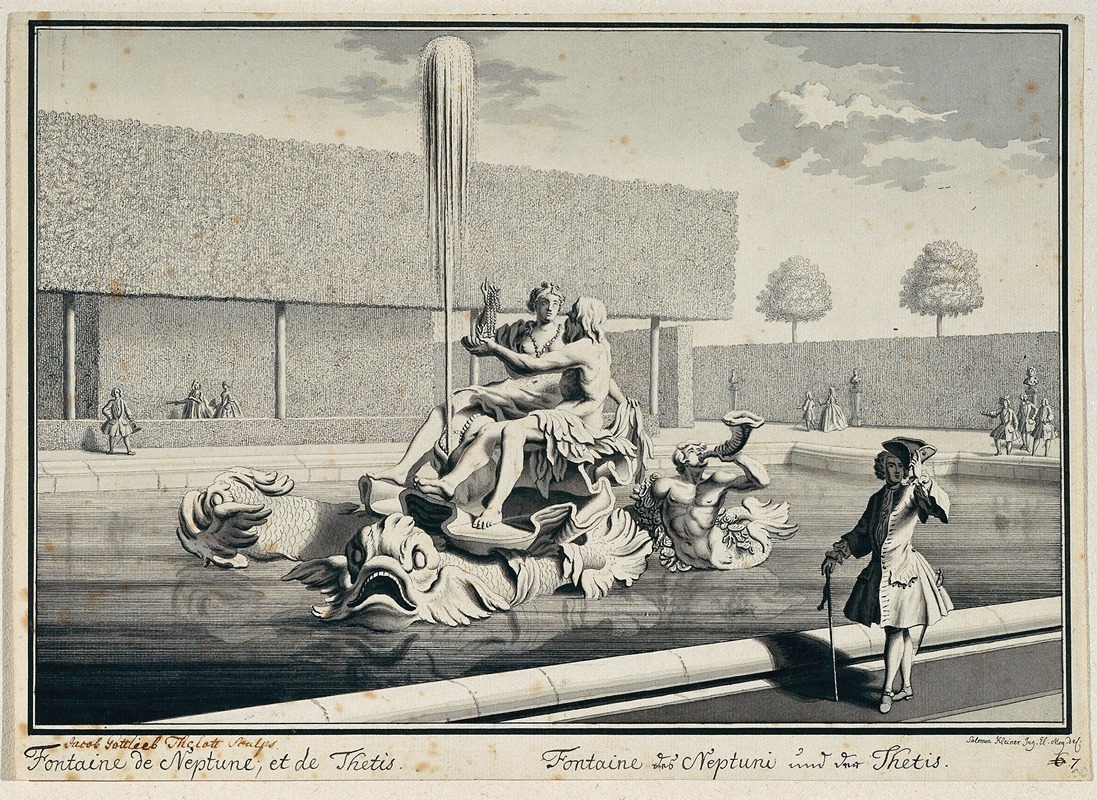
Salomon Kleiner was a vedute draftsman and copper engraver.
Salomon Kleiner was the son of a court procurator and later notary of the same name who came from Lindau. His mother, Maria Rosina Roggin from Augsburg, died shortly after he was born. At the age of 15 or 16 he was apprenticed to the Augsburg engraver Johann August Corvinus .
From 1720 he lived in Vienna, where he began to draw the monasteries, churches, secular buildings, streets and squares of the imperial city on behalf of the Augsburg art publishers Johann Andreas Pfeffel (1674–1748) and Jeremias Wolff Veduta were published between 1724 and 1737. He left Vienna for a long time only for the commission given by Lothar Franz von Schönborn to build the Schönbornsche castles in Pommersfelden ( Schloss Weißenstein) and Mainz ( Schönborner Hof , Lustschloss Favorite) to draw (1723–1726). His work was highly valued there and in 1724 he received the title "Chur-Mainzischer Ingenieur". After these works, Kleiner probably returned to Vienna in 1727 in order to continue his veduta work. In 1744 he created his copperplate Göttweig Abbey. From 1746 Kleiner worked as a professor at the Theresianum. From 1750 he created illustrations for the Monumenta Augustae Domus Austriacae. Kleiner lived in Vienna in der Josefstadt.
